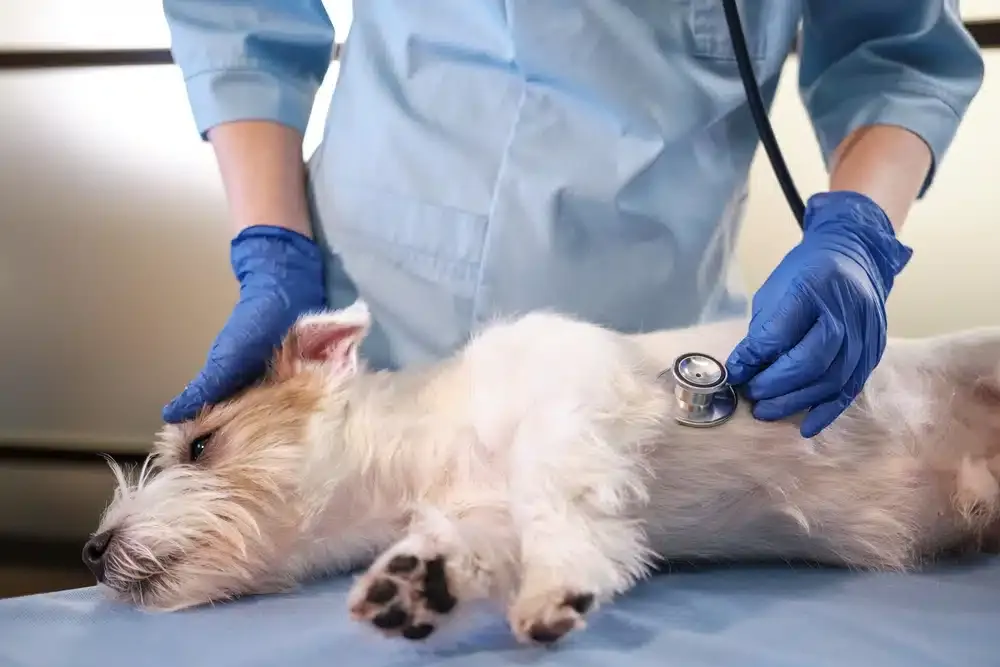How to Know Your Pet Is Sick? Pet Illness Symptoms You Should Not Ignore
One of your priorities is ensuring your furry friend remains healthy and happy. But how do you know your pet is sick? Fighting the early warning signs of pet illness symptoms can make a significant difference in timely medical care. Understanding the common symptoms and behavioral changes. That indicates your pet might be bad is pivotal for their well-being.
Just like humans, they can witness a wide range of health issues. Some ails develop gradually, while others can strike suddenly and bear immediate attention. Being watchful and familiar with the signs of health problems ensures that you’re set to act swiftly when necessary. Numerous pet owners frequently overlook subtle signs. Assuming them to be normal gesture or temporary discomfort. Still, knowing how to tell if your pet is sick can help help minor issues from getting serious.
The significance of Feting Pet Illness Symptoms Early
Delaying veterinary discussion when symptoms are subtle can occasionally lead to complications . This is why it’s essential to know how to identify pet illness symptoms beforehand, so you can seek professional help before the problem worsens.
Several factors impact the implicit inflexibility of symptoms. Including t strain, age, overall health, and specific complaint. For illustration, an elderly canine might show age-related health issues. Likewise, some symptoms are common across numerous conditions. Understanding what typical signs look like can help you act instantly.
How to Know Your Pet Is Sick Fighting the Signs and Symptoms
Knowing how to tell if your pet is sick involves attentive observation of their gesture . physical condition, and habits. The crucial pet illness symptoms to watch for and give guidance on what they might signify.
Crucial pointers of health problems include
- unforeseen or gradual behavioral changes
- differences in appetite
- Changes in restroom habits
- Physical symptoms like puking, coughing, or discharge
- Changes in skin or fleece condition
- Abnormal physical appearance or swelling
- inordinate scratching or fixing
- Unusual declamations or signs of pain
Behavioral Signs That Indicate Your Pet Is Sick
frequently the first and utmost conspicuous index that a commodity is wrong. Faves communicate their discomfort or torture in ways we might not immediately fete . Some crucial behavioral signs include
- languor or weakness
If your pet appears less active, refuses to play, or seems exorbitantly tired after rest, it could be a sign of illness.
- Hiding or pullout
numerous creatures seek solitariness when they feel bad, hiding in isolated places or avoiding contact.
- Perversity, or aggression
unforeseen aggression or perversity can affect from pain or discomfort.
- Changes in sleeping patterns
Sleeping further than usual or, again, difficulty sleeping can gesture health issues.
- Restlessness or pacing
Unusual pacing or incapability to settle down could be symptoms of pain or neurological issues.
- Communication
ncreased blubbering, barking, or meowing can indicate pain, anxiety, or other health problems.
Loss of Appetite and Weight Changes
A unforeseen loss of appetite or turndown to eat is frequently a red flag, especially when accompanied by other symptoms. Again, gorging or glimmering hunger can also be signs of health disturbances.
Noticing weight loss or gain is inversely important. unanticipated weight loss could be linked to spongers, infections, metabolic diseases, or indeed cancer. Weight gain might suggest hormonal issues like hypothyroidism or side goods of drug.
Restroom and Excretion Issues
These include following problems:
- Diarrhea or constipation
patient diarrhea may indicate infections, salutary issues, or spongers. Constipation can beget discomfort and may gesture systemic issues.
- Frequent urination or changes in urination habits
Increased urination could indicate diabetes or order complaint, while difficulty urinating may affect from urinary tract infections or blockages.
- Blood in coprolite or urine
Presence of blood is always alarm- good and requires immediate veterinary attention.
- Unusual urination locales
Accidents outside the waste box or pet urinating in unhappy places can be signs of urinary problems or behavioral issues.
Physical Symptoms Vomiting, Coughing, and Discharges
Physical symptoms are frequently the most egregious when your pet is bad. Some of the most common pet illness symptoms related to physical health include
- Vomiting
Occasional vomiting may be normal, but frequent or severe occurrences bear medical attention. It could gesture infections, gastrointestinal issues, ingestion of poisons, or organ problems.
- Discharges
Abnormal discharges from eyes, nose, cognizance, or genital area frequently indicate infections or antipathetic responses.
- Lumps, bumps, or bumps
Visible growths can be benign or nasty. lump must be regularly wash and look out by keeper.
Skin and cover Changes
The skin is a window into your pet’s health patient itching, greenishness, hair loss. Skin lesions could indicate disinclinations, bacterial or fungal infections, or spongers like fleas. and diminutives. inordinate grooming can also be an index of discomfort due to skin conditions .
Other Warning Signs
- Breathing difficulties: Labored or rapid-fire breathing clearances immediate warhorse attention.
- Unexplained fever: Overheating or fevered geste suggests an infection or inflammation.
- Bad breath Can gesture dental complaint, infections, or systemic health issues.
- Unusual odors :Foul smells from cognizance, skin, or mouth may be signs of infection or dental problems.
- Awkward movements :Ataxia or balance issues can point to neurological or muscular enterprises.
Common Pet ails and Their Symptoms
specific pet ails and their typical symptoms will help you separate between minor health issues and critical conditions. Then is a summary of some common pet ails
1. Feline and Canine Parasitic Infections
– Prevention Regular flea and tick control
-deworming schedules, maintaining a clean terrain.
2. Respiratory Infections
– Symptoms Coughing, sneezing, nasal discharge, labored breathing, fever.
– frequently caused by contagions similar as kennel cough or nimble herpes.
3. Gastrointestinal diseases
– Symptoms Vomiting, diarrhea, loss of appetite, bloating.
– Causes Infections, ingestion of poisons or foreign objects, salutary changes.
4. Urinary Tract conditions
– Symptoms Frequent urination, blood in urine, pain during urination, shellacking genitals exorbitantly.
-Common conditions Urinary tract infections, monuments, or bladder inflammation.
5. Dental conditions
– Symptoms Bad breath, drooling, difficulty biting , blown or bleeding epoxies.
– Prevention Regular dental checks and oral hygiene routines.
6. Skin Conditions
– Symptoms Itching, greenishness, hair loss, dermatitis, injuries that wo n’t heal.
– Causes disinclinations, spongers, bacterial or fungal infections.
7. Organ Problems( feathers, Liver, Heart)
– Symptoms Fatigue, swelling in branches or tummy, puking, loss of appetite.
– These conditions frequently develop gradationally but bear ongoing operation.
8. Cancer
– Symptoms patient lumps, unusual weight loss, bleeding, difficulty swallowing.
-Early discovery and treatment ameliorate prognostic significantly.
How to help Pet ails Tips for Pet Owners
Prevention is always better than cure. Then are essential measures for keeping your cherished pet healthy
- Routine Veterinary Visits
Regular checks allow early discovery of health issues. Annual orbi-annual examinations, vaccinations, and wireworks give a health safety net.
- Proper Nutrition
Consult your warhorse for recommendations on high- quality, species-applicable food.
- Vaccinations
Keep vaccines up to date, especially for preventable conditions like rabies, illness, parvovirus, nimble leukemia, and others.
- Parasite Control
apply a flea, crack, and worm forestallment plan. Regular treatments and environmental cleaning can significantly lower infection threat.
- Grooming and Hygiene
Routine grooming helps descry skin issues beforehand. Proper bathing, brushing, and dental care are essential factors of health.
- Environmental Safety
insure your pet’s terrain is safe from poisons, shops, and substances that could be dangerous.
- Exercise and Mental Stimulation
Regular physical exertion maintains overall health and prevents rotundity. Mental engagement reduces tedium and stress, which can lead to destructive actions and health problems.
- Monitor Behavior and Habits
Stay attentive to your pet’s diurnal routine and note any changes. Beforehand discovery of abnormal actions frequently makes opinion easier.
What Should You Do if You Notice Pet Illness Symptoms?
still, do n’t delay seeking veterinary care, If you notice any of the symptoms or signs bandied over. Beforehand intervention can be life- saving and less stressful for your pet.
Steps to take include
- insulate your pet if contagious illness is suspected to help spreading.
- Keep a record of symptoms, changes, and any possible exposures or incidents.
- communicate your veterinarian instantly, furnishing detailed information.
- Follow veterinarian instructions regarding diagnostics or treatment.
Final studies
Knowing how to tell if your pet is sick is essential for every pet proprietor. Feting pet illness symptoms beforehand, similar as behavioral changes, appetite disturbances. Physical abnormalities, or respiratory issues, can be the key to icing your furry friend’s health and happiness. faves are family, and their health depends on our alert and love.
Regular veterinary checks, a balanced diet, preventative care, and prompt attention to symptoms form the foundation of good pet health. Flash back, your alertness can help minor issues from getting major health heads. Be visionary, stay informed, and cherish every moment with your pious companion.




